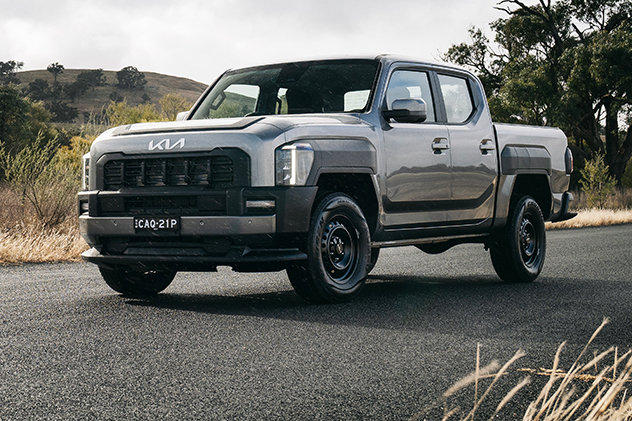
Hyundai’s local arm has revealed more specific timing and select details for its much anticipated – but thus far highly guarded – foray into Australia’s hugely popular dual-cab ute segment.
Speaking to Australian media last week, Hyundai Australia president and chief executive officer Dom Romano – brought in from Canada earlier this year to oversee local operations – gave clues about when Australians should expect a ute brandishing the South Korean brand’s emblem.
“I’m not leaving until [Hyundai Australia] has a ute,” Mr Romano said. “And my work permit goes for another two and a half years.”
If this timing is accurate, it would place the arrival of a Hyundai ute in the middle of 2028, cementing previous reports stating the model would arrive inside this decade.
As expected, the still-unnamed model has now been confirmed to be dimensionally similar to the best-selling dual-cab Toyota HiLux and Ford Ranger. This means Hyundai’s new mid-size ute would also compete with sister company Kia’s new Tasman ute.

Above: Kia Tasman ute
Abroad, Hyundai is involved in co-development with General Motors, and Romano would not rule out a shared utility vehicle platform. Currently, the brands are said to be assessing two utility platforms, although only one of them is under consideration for Australia at this stage.
According to Mr Romano, offering buyers something unique will be paramount for the new model’s success:
“We need to differentiate ourselves [from competitors] … we’re currently working on technologies different to anything we’ve brought to market,” he said.
"I can’t get into the details, but [those new technologies] will be coming out before I leave ... [they will] ensure that our ute and our vehicles in the future are different than what China is currently producing."
What these technologies might entail is anyone’s guess, with Hyundai having made great investments in hybrid, battery electric and even hydrogen fuel cell powertrains in recent years. A move into range-extended EVs, that utilise a combustion generator to charge an EV's battery for greater range, is also not off the cards.
A 2.2-litre diesel powerplant still exists within Hyundai’s stable in its Staria van – its basic architecture also powering the Kia Tasman – but Australia’s New Vehicle Efficiency Standard (NVES) will mean its usage (or the use of any diesel engine for that matter) will need to be carefully considered.
In 2024, dual-cab utes made up three of the top four best-selling models in Australia.